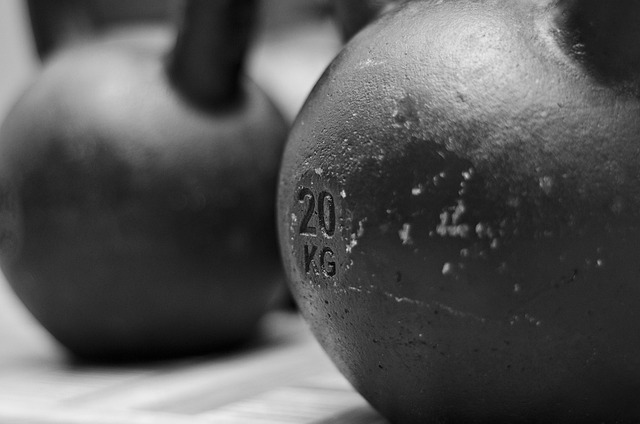Cardiovascular fitness is a cornerstone of overall health, and a cross trainer offers an accessible, low‑impact way to strengthen the heart, improve circulation, and elevate endurance. Whether you’re a seasoned athlete looking to diversify your routine or a beginner eager to build a solid fitness foundation, the cross trainer’s smooth, guided motion encourages consistent effort without overstressing joints or risking overuse injuries.
Why a Cross Trainer Matters for Heart Health
When you pedal on a cross trainer, your heart rate rises in a steady rhythm, mirroring the benefits you would obtain from running or cycling but with reduced impact on knees, hips, and ankles. Research shows that moderate‑intensity exercise on this equipment can raise maximal oxygen uptake (VO₂ max) by up to 15% after just eight weeks of training. In addition, the controlled range of motion allows you to adjust resistance levels precisely, making it easier to target specific heart‑healthy zones such as 60–70% of maximum heart rate.
- Lower joint stress while maintaining a high cardiovascular stimulus.
- Customizable resistance enables progressive overload.
- Continuous, rhythmic motion promotes efficient blood flow.
Getting Started: Setting Up Your Cross Trainer
Before you begin, it’s essential to understand the key components of the machine: the frame, handlebar, foot pedals, and resistance system. Most cross trainers use either magnetic or resistance band technology, both of which provide a smooth climb that can be finely tuned.
1. Adjust the Seat and Handlebars
Position the seat so that your hips are slightly lower than your knees when the pedal is at its lowest point. This ensures a full range of motion without locking the knee. Move the handlebars so your forearms remain parallel to the floor; this reduces strain on the shoulders and neck.
2. Test Your Foot Placement
Place your feet on the pedals with the ball of your foot centered over the pedal shaft. This alignment helps distribute weight evenly across the lower leg and prevents undue pressure on the ankles.
3. Set Your Initial Resistance
Start with the lowest resistance setting. You’ll need to find a level that allows you to maintain a conversational pace for at least five minutes before feeling the heart rate begin to climb.
Sample Workout Plans for Different Fitness Levels
Below are three progressive workout structures that emphasize cardiovascular benefits while allowing you to monitor heart rate zones accurately.
Beginner Circuit (30 minutes)
- Warm‑up: 5 minutes at resistance 1–2, maintaining a heart rate below 50% of maximum.
- Intervals: 3 rounds of 4 minutes at resistance 3–4, target 60–70% max heart rate; 2 minutes active recovery at resistance 1.
- Cool‑down: 5 minutes at resistance 1, heart rate below 55%.
Intermediate Steady‑State (45 minutes)
- Warm‑up: 5 minutes at resistance 2.
- Continuous ride: 35 minutes at a steady resistance that keeps heart rate between 65–75% of maximum.
- Cool‑down: 5 minutes at resistance 2, followed by gentle stretching.
Advanced Interval Training (60 minutes)
- Warm‑up: 10 minutes at resistance 3, maintaining 55–60% max heart rate.
- High‑intensity intervals: 6 cycles of 3 minutes at resistance 6–7 (80–85% max), followed by 3 minutes at resistance 2 (active recovery).
- Cool‑down: 10 minutes at resistance 2, with heart rate tapering to 50%.
Safety Tips and Common Pitfalls
Although the cross trainer is low‑impact, improper form or over‑exertion can still lead to discomfort or injury. Keep these guidelines in mind.
- Never lock your knees; keep a slight bend to protect the joint.
- Maintain a neutral spine; avoid excessive leaning forward or backward.
- Stay hydrated, especially during longer sessions.
- Check the machine’s bearings and cables regularly to avoid mechanical failure.
Integrating Cross Trainer Workouts into a Comprehensive Fitness Regimen
To maximize cardiovascular gains, pair cross trainer sessions with strength training, flexibility work, and active recovery days. A balanced weekly plan might look like this:
- Monday – Beginner circuit (30 min)
- Tuesday – Upper‑body strength (45 min)
- Wednesday – Rest or gentle yoga
- Thursday – Intermediate steady‑state (45 min)
- Friday – Lower‑body strength and core (50 min)
- Saturday – Advanced intervals (60 min)
- Sunday – Active recovery walk or light stretching
Nutrition and Recovery: Fueling Your Heart‑Healthy Journey
Nutrition plays a pivotal role in supporting cardiovascular endurance. Focus on a diet rich in complex carbohydrates, lean proteins, and heart‑friendly fats. Adequate calcium, magnesium, and potassium help regulate blood pressure, while antioxidants from fruits and vegetables mitigate oxidative stress from increased aerobic demand.
“Hydration is the foundation of performance; a 2–3% loss in body weight can impair aerobic capacity by up to 10%.”
Recovery strategies such as foam rolling, progressive stretching, and sufficient sleep (7–9 hours per night) help reduce inflammation and facilitate muscle repair, enabling you to maintain consistent training volume over time.
Tracking Progress and Staying Motivated
Keeping a training log is essential for measuring improvements in heart rate response, endurance, and overall fitness. Record session duration, resistance level, perceived exertion, and heart rate zones. Over weeks, you’ll notice lower heart rates at the same resistance, indicating enhanced cardiovascular efficiency.
For motivation, set realistic, incremental goals: start with a 10‑minute ride, then increase by five minutes each week. Celebrate milestones—such as reaching a 30‑minute steady‑state session—by rewarding yourself with a new piece of workout gear or a relaxing massage.
Conclusion: Harnessing the Cross Trainer for a Stronger Heart
The cross trainer offers a versatile, low‑impact platform for cultivating cardiovascular strength. By adjusting resistance, monitoring heart rate, and incorporating structured intervals, you can steadily elevate heart health, reduce disease risk, and build endurance without compromising joint integrity. Combine these workouts with balanced nutrition and adequate recovery, and you’ll set yourself on a sustainable path toward lasting fitness and vitality.


